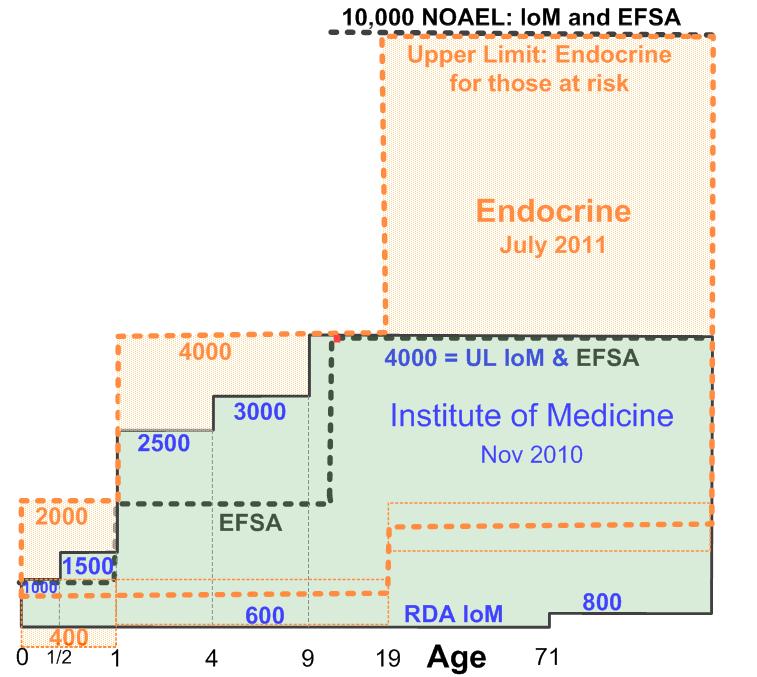European Osteo group recommends 20-50 ng of vitamin D
Vitamin D supplementation in elderly or postmenopausal women:
A 2013 update of the 2008 recommendations from the European Society for Clinical and Economic Aspects of Osteoporosis and Osteoarthritis (ESCEO).
Curr Med Res Opin. 2013 Jan 15.
Rizzoli R, Boonen S, Brandi ML, Bruyère O, Cooper C, Kanis JA, Kaufman JM, Ringe JD, Weryha G, Reginster J.
Background Vitamin D insufficiency has deleterious consequences on health outcomes. In elderly or postmenopausal women, it may exacerbate osteoporosis.
Scope There is currently no clear consensus on definitions of vitamin D insufficiency or minimal targets for vitamin D concentrations and proposed targets vary with the population. In view of the potential confusion for practitioners on when to treat and what to achieve, the European Society for Clinical and Economic Aspects of Osteoporosis and Osteoarthritis (ESCEO) convened a meeting to provide recommendations for clinical practice, to ensure the optimal management of elderly and postmenopausal women with regard to vitamin D supplementation. Findings Vitamin D has both skeletal and extra-skeletal benefits. Patients with serum 25-hydroxyvitamin D (25-(OH)D) levels <50 nmol/L have increased bone turnover, bone loss, and possibly mineralization defects compared with patients with levels >50 nmol/L. Similar relationships have been reported for frailty, nonvertebral and hip fracture, and all-cause mortality, with poorer outcomes at <50 nmol/L.
Conclusion The ESCEO recommends that 50 nmol/L (i.e. 20 ng/mL) should be the minimal serum 25-(OH)D concentration at the population level and in patients with osteoporosis to ensure optimal bone health.
Below this threshold, supplementation is recommended at 800 to 1000 IU/day.
Vitamin D supplementation is safe up to 10 000 IU day (upper limit of safety) (resulting in an upper limit of adequacy of 125 nmol/L 25-(OH)D).
Daily consumption of calcium- and vitamin D-fortified food products (e.g. yoghurt or milk) can help improve vitamin D intake.
Above the threshold of 50 nmol/L, there is no clear evidence for additional benefits of supplementation.
On the other hand, in fragile elderly subjects who are at elevated risk for falls and fracture, the ESCEO recommends a minimal serum 25-(OH)D level of 75 nmol/L (i.e. 30 ng/mL), for the greatest impact on fracture.
PMID: 23320612
See also VitaminDWiki
Vitamin D Recommendations around the world - IU and ng which includes the following chart

